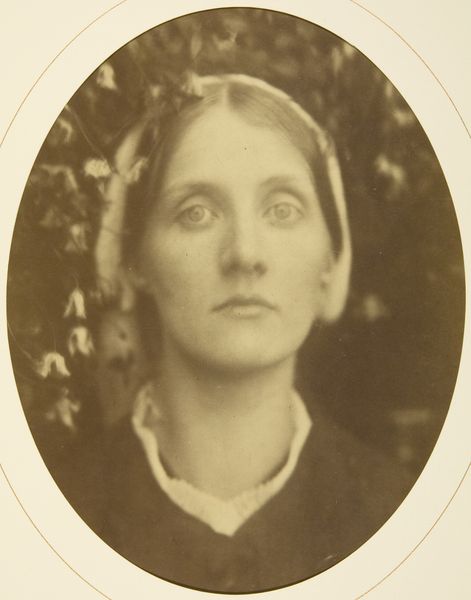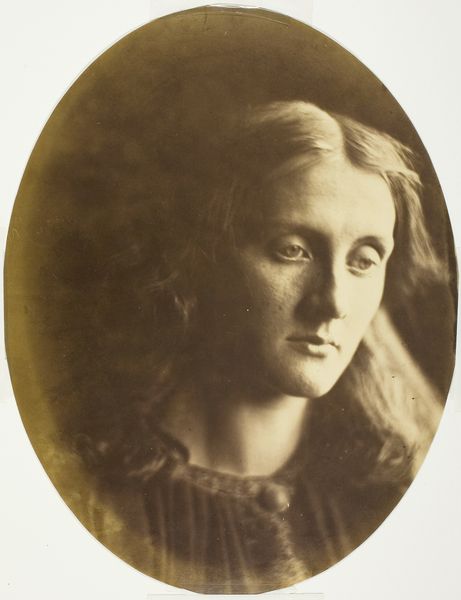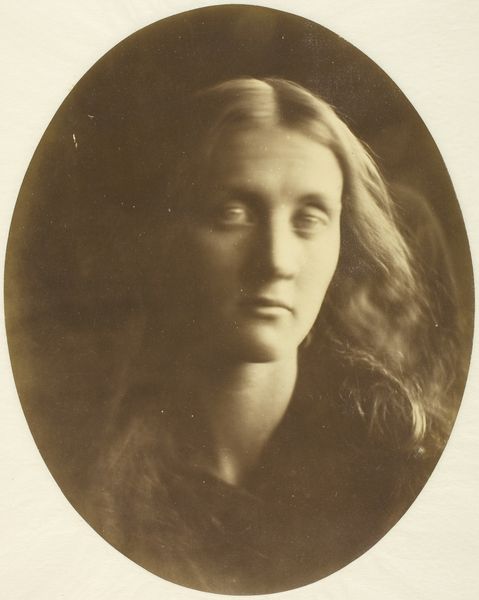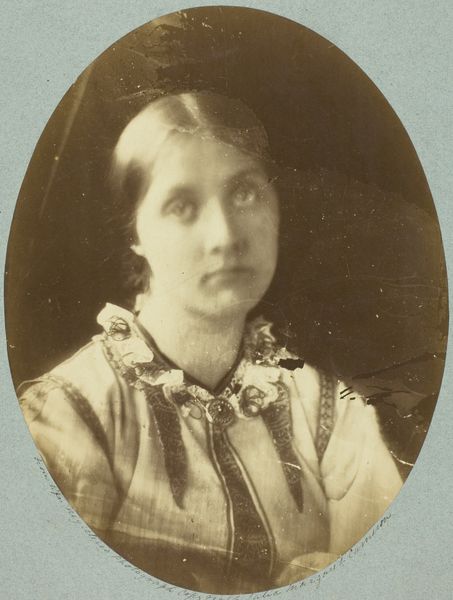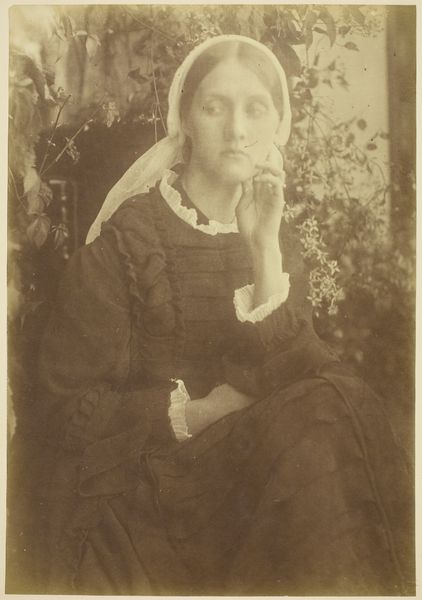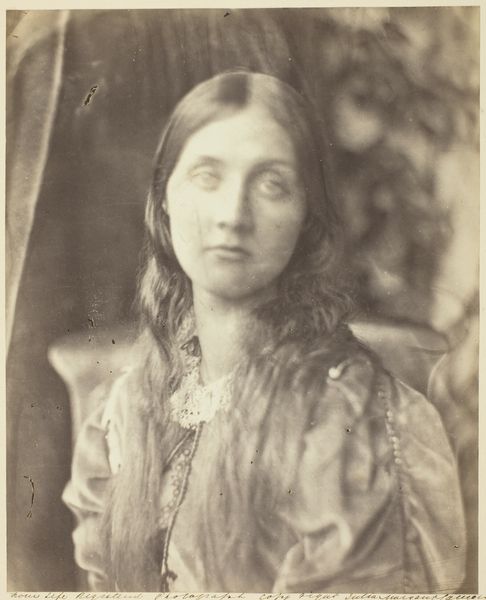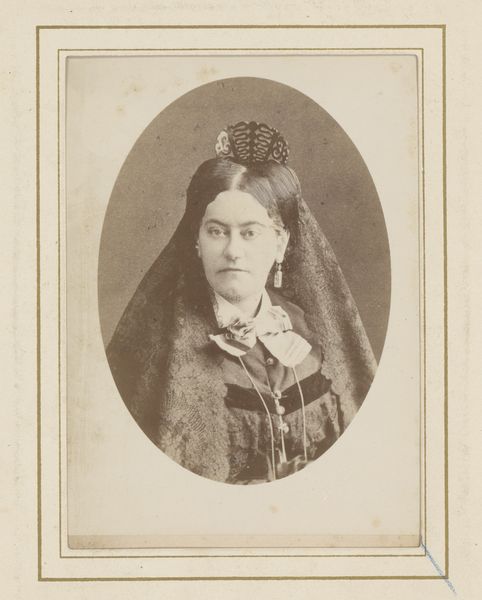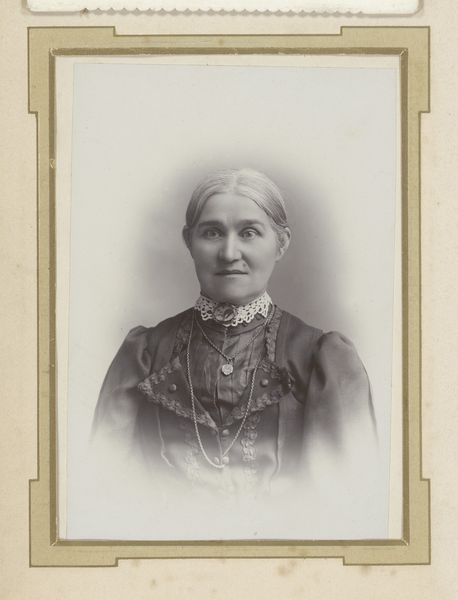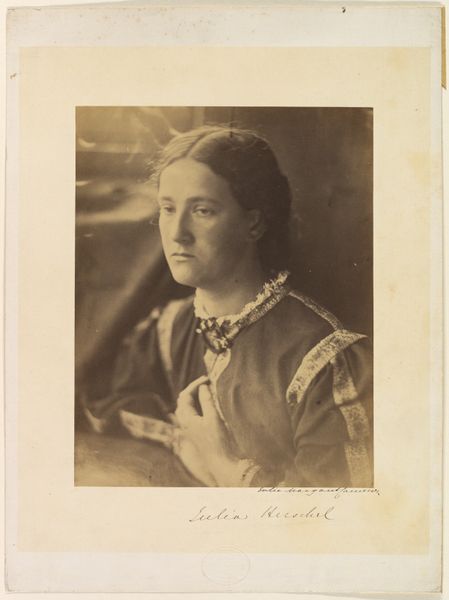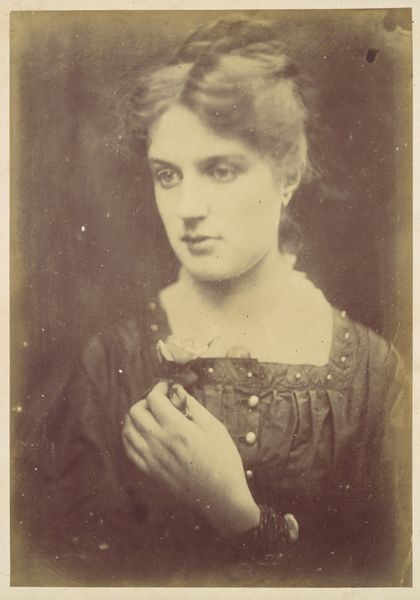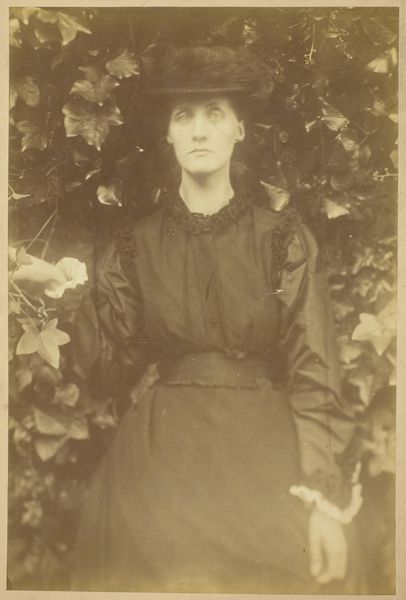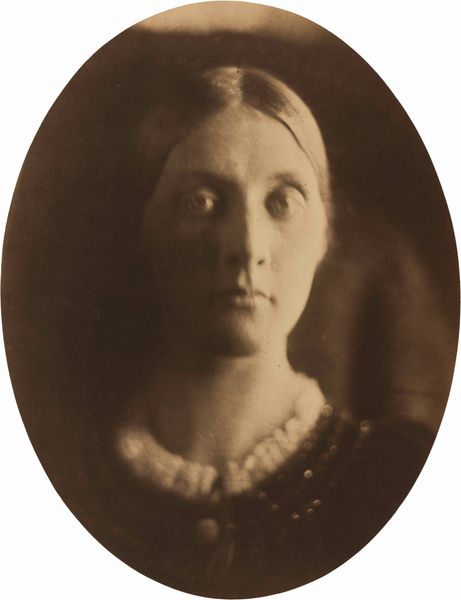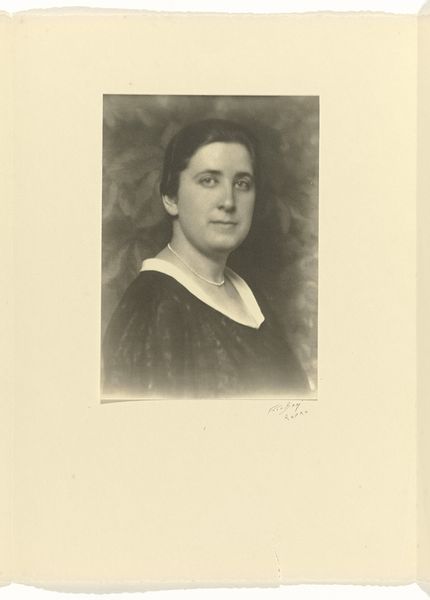
Dimensions: 25 × 20.2 cm (image/paper, oval); 44.2 × 35.5 cm (mount)
Copyright: Public Domain
Curator: Let's consider this striking portrait by Julia Margaret Cameron, titled "Mrs. Herbert Fisher," created around 1864. It's a gelatin-silver print currently residing at the Art Institute of Chicago. Editor: The soft focus immediately evokes a sense of intimacy, doesn't it? The oval format containing the sitter concentrates my gaze directly on her face, a face that exudes vulnerability and depth. Curator: Absolutely. Cameron was revolutionary in her embrace of the imperfections and contingencies of early photographic processes. Her choice of the gelatin-silver print as a medium during that period also reveals an engagement with the evolving chemical processes and aesthetic possibilities being opened by industry. It was faster and allowed more detail than earlier processes. This wasn’t accidental—it was tied to changing economic and technological circumstances. Editor: Yes, but those supposed "imperfections" - the soft focus, the visible flaws - I'd argue that these elevate the portrait beyond mere representation. The blurred edges give it a timeless quality, like a Pre-Raphaelite painting striving toward higher meaning. The composition centers on her face, her features almost archetypal. Curator: But doesn’t the "romantic" interpretation obfuscate Cameron's role as an active participant within Victorian visual culture? These portraits served very particular purposes, helping to constitute familial identities, circulating likenesses amongst networks of friends. We have to recognize photography in Victorian England was often intended as an activity meant to define new forms of social bonds within rapidly shifting socio-economic circumstances. Editor: Perhaps, yet there is an undeniably artistic impulse at play. The dramatic light, almost sculptural modeling of Mrs. Fisher's face - and look at the textures. Even the small circular necklace, a focal point drawing the eye downward - each element enhances the visual narrative. It pushes toward pure aesthetic engagement. Curator: I find your point valuable. It pushes me to look deeper into both artistic choices while at the same time realizing their relation to wider historical dynamics. Thank you. Editor: The pleasure was all mine. Analyzing the beautiful intricacies can deepen the understanding of our world, even by simply discussing formal choices like light and texture.
Comments
No comments
Be the first to comment and join the conversation on the ultimate creative platform.
